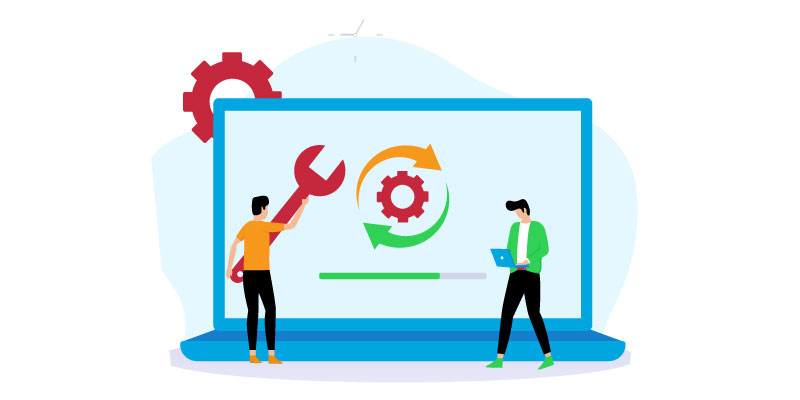- AI

Artificial Intelligence

Smart Products & Services
We follow Smart Products & Services

Intelligent Business Functions & Processes
We follow Intelligent Business Functions & Processes

Robotic Process Automation
We follow Robotic Process Automation

Personalized
healthcareWe follow Personalized healthcare

Identifying at-risk patients
We follow Identifying at-risk patients

Optimized routing and scheduling
We follow Optimized routing and scheduling
- ML

Machine Learning

Predictive
AnalyticsWe follow Predictive Analytics

Service Personalization
We follow Service Personalization

NLP
We follow NLP (Natural Language Processing)

Stock Market Forecasting
We follow Stock Market Forecasting

Fraud Prevention
We follow Fraud Prevention

Recommender engines
We follow Recommender engines
- blockchain
- IOT

Internet of Things
- AR
- Business Solutions

Business Solution

Business Performance Management
We follow Business Performance Management

Decision Making & Big Data Analytics
We follow Decision Making & Big Data Analytics

Enterprise Data Management
We follow Enterprise Data Management
- Apps

Apps

Native Apps
We follow Native Apps

Cross Platform Apps
We follow Cross Platform Apps

Web Apps
We follow Web Apps

Hybrid Apps
We follow Hybrid Apps

Cloud Native Apps
We follow Cloud Native Apps
- Lab

7 Steps For Custom Software Development
Software development is not a new practice in the industry. It is a common trend for companies in the world. Many organisations build ready-made software for clients that are available through licensed versions in the market. Big giants like Microsoft, Oracle, IBM, Adobe, and many other leading firms create and sell their built-in software to businesses and general public.
These software offer the same functionalities to everyone and do not provide additional features. Due to certain limitations in readymade software, businesses started to build their in-house and personalised software. They are built for a specific company or internal department and used for particular purposes and applications. The popularity of custom software development gradually rises and now it has become a need for every organisation today.
It uses a complete software development lifecycle popularly known as SDLC to plan, develop, execute, and deliver a software project. A custom-built software is designed according to the requirements and specifications of client. It improves the efficiency and productivity of workflow operations of organisations.
Here are the following steps for custom software development:
Gathering Initial Requirements

Research is the primary element for software creation. It allows developers to have deep knowledge and understanding of client business. They should meet up and discuss about the purpose and aim of developing a software and what goals a company wants to achieve from launching their product in the market. After gathering these basic information, developers can build a professional software that can meet all the expectations of a client.
Planning And Brainstorming

It is an initial phase in software development. Planning allows developers to think and brainstorm the idea of creating a wireframe sketch of software design. They discuss about the core features and functionalities of a desktop website or mobile application. A thorough and careful analysis is necessary in developing a software product.
Businesses need to find the scope of the project and it must meet their strategic objectives. They should discuss everything in detail to the client about availability of resources, cost of production, and timeframe for delivery.
Feasibility Analysis

The feasibility report is an essential document that is written and signed by both parties. It discusses the strengths, weaknesses, pros, and cons of software product. The development team should meet up with client and ask the detailed requirement of a software. They should discuss the technical and financial aspects of software project and how much time, cost, and resources would require to complete this task. They also address the potential risks associated with this project and calculate the ROI for return on investment.
Creative Technical Design

Design is a prominent and dominant aspect of software product. It uses a creative sense of idea to think and implement the latest concepts of colourful designs that captivate the audience. It enhances the UX design, layout, and functionality of a website or software application. The modular design concept displays the mock design interfaces on the choice and requirement of customers. Businesses can add the latest technologies like artificial intelligence services to boost the performance of their software product.
Coding And Development

The software development phase involves the front-end, back-end, database, and full stack development. Developers need to write the line of code, compile, debug, and execute the code to meet the client software requirements. The coding should match the wireframe design and software architecture.
Businesses should use the agile and scrum framework tools to break down the tasks in small sprints. It improves the software workflow process and increases the core productivity of company operations.
Quality Assurance Testing

Testing is a stage that involves fixing of technical coding errors. It is a job of a software quality assurance team to test the software in various ways. They do manual and automatic testing to check the defects and deficiencies in a product.
The alpha and beta testing are necessary phases to eliminate all irregularities in software applications before getting ready for the final release version. These testing are ideal to receive constructive feedback from the customers to improve better features of software in future.
Deployment And Maintenance

Deployment is the post release phase of software. It is a crucial stage to install the customised software in your organisation and train the employees how to use it. After the product release, the difficult thing is to deploy it on the user system. Every single user or employee of a company should be familiar with the proper working on the software.
Maintenance is another essential factor to resolve the issues that may arise after the release of software in the market. The support team should assist the user in handling complex issues and resolving them as soon as possible.
Bottom Line
Hence, in a nutshell, these above-mentioned are the remarkable steps for custom software development. These steps are ideal for a blockchain development company to hire a third party software agency for its business.
Also Read: Stages And Processes Of Software Development



















































Leave a Reply